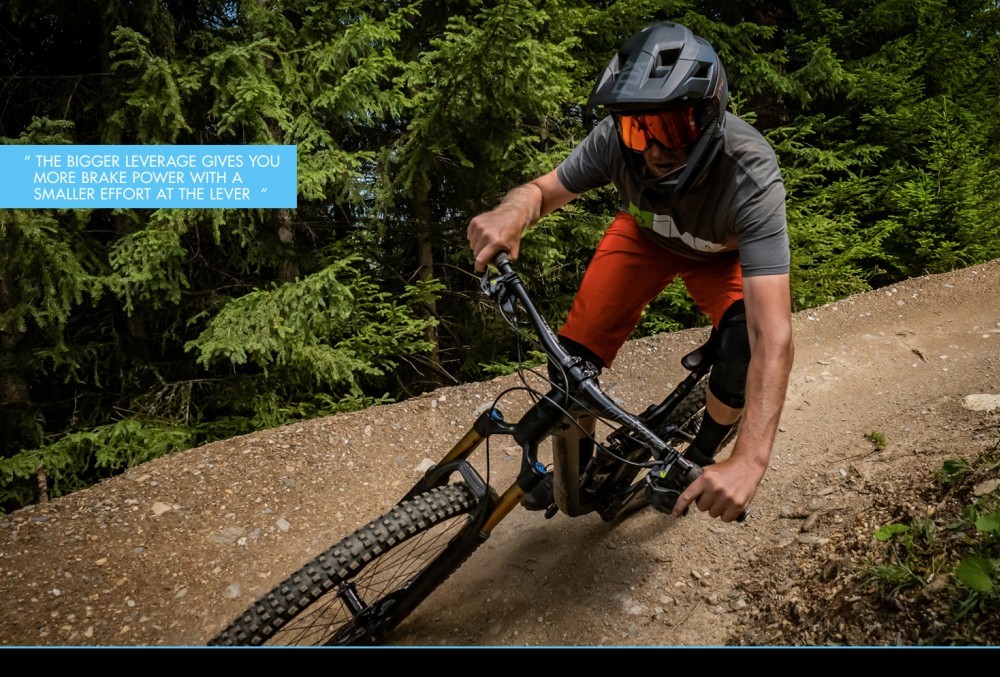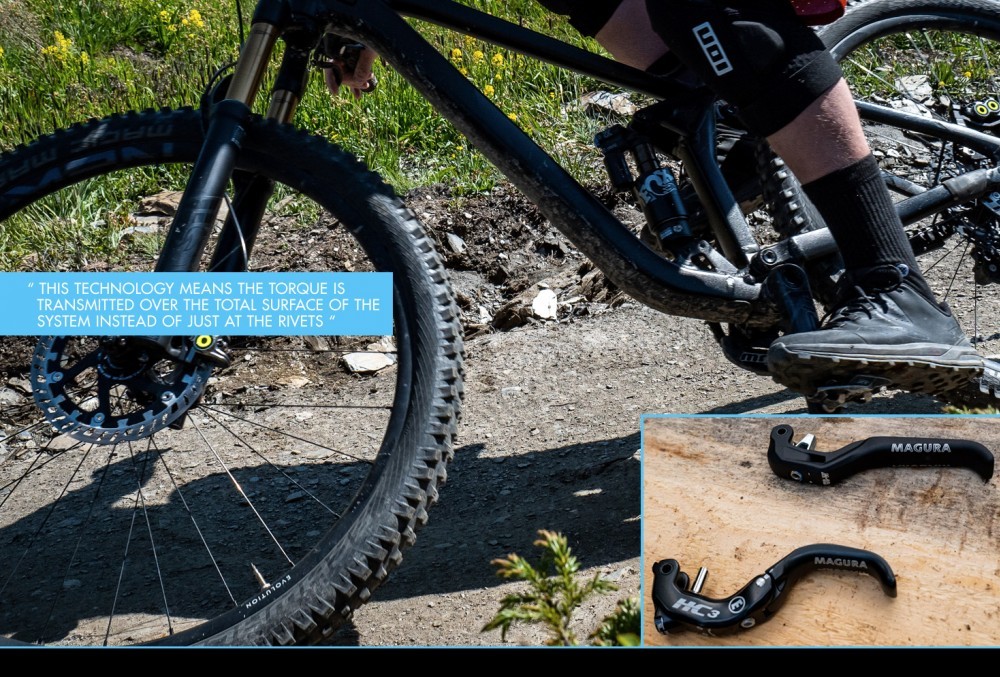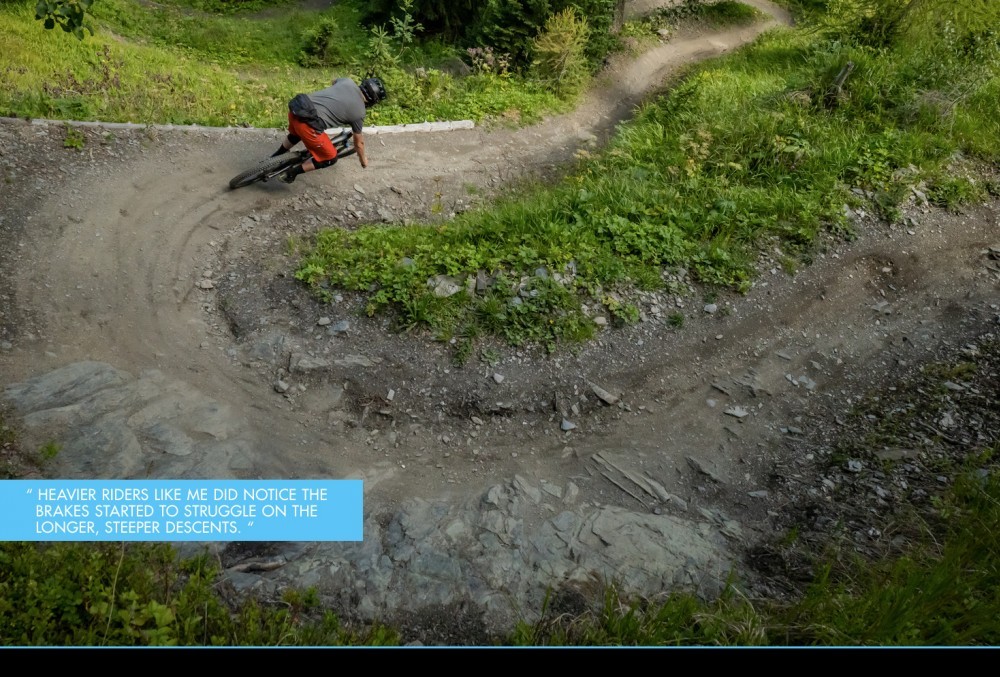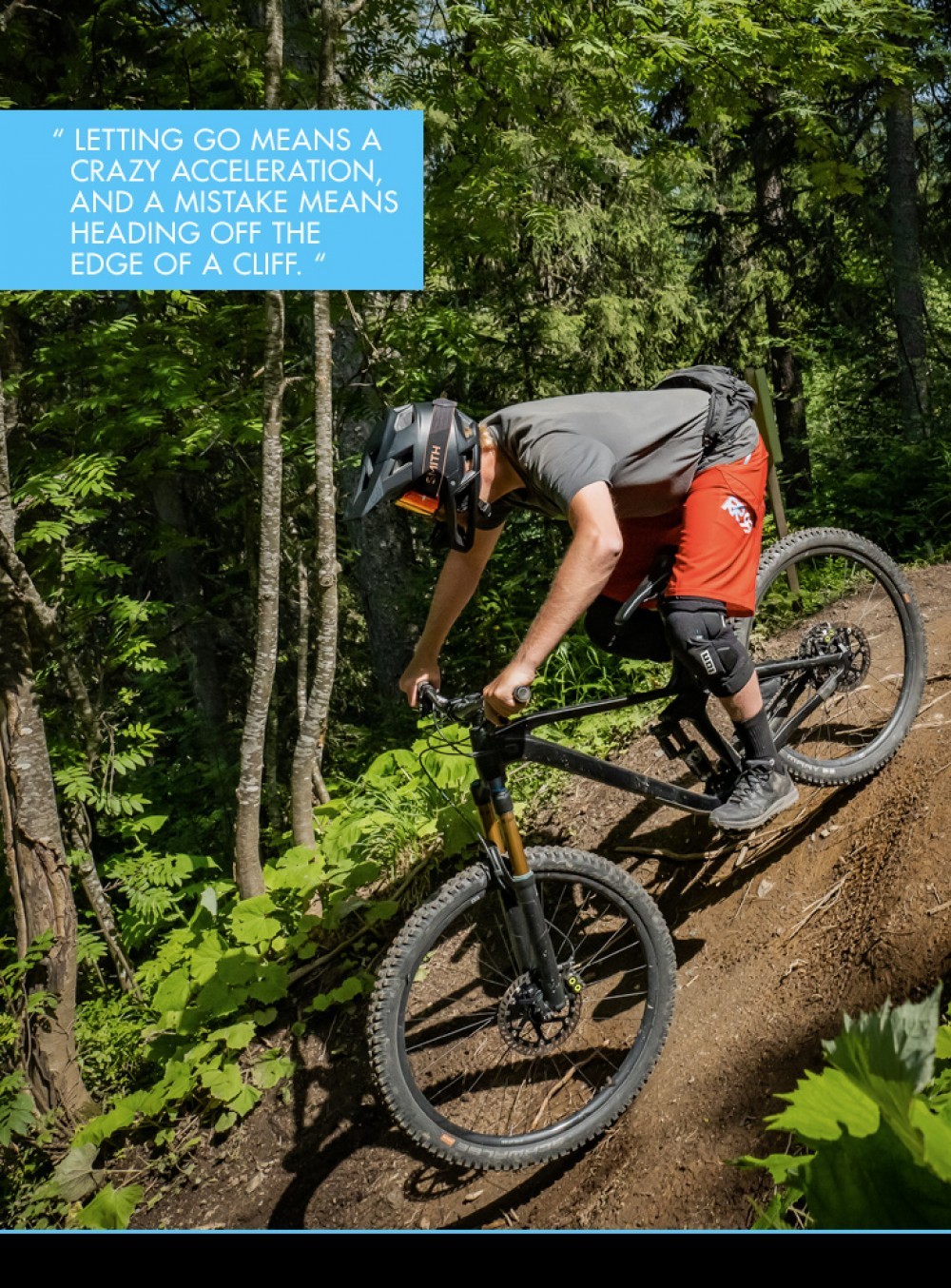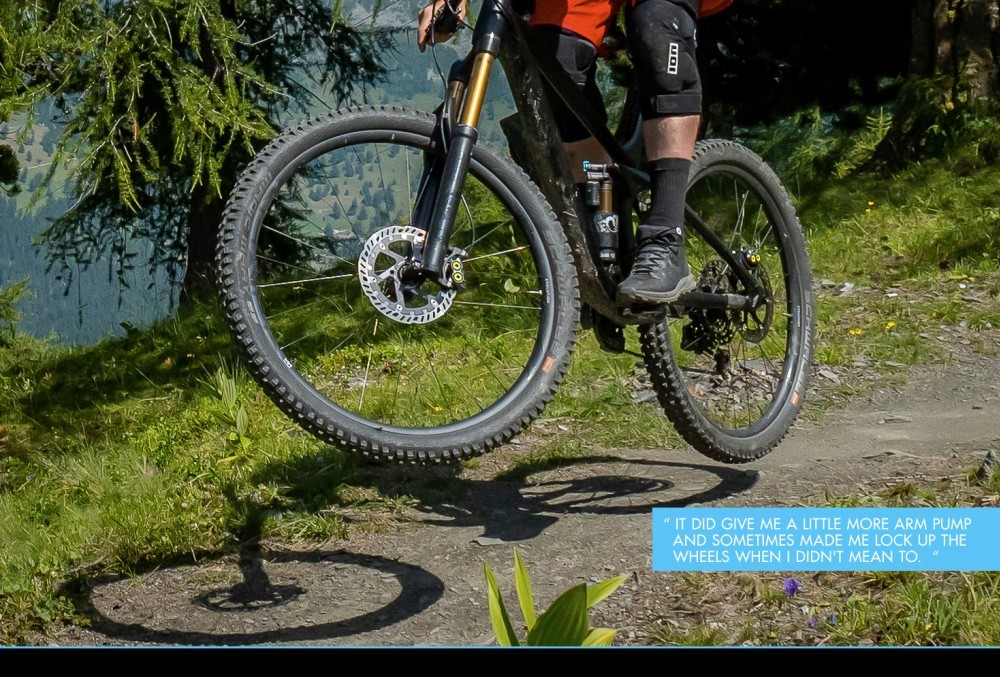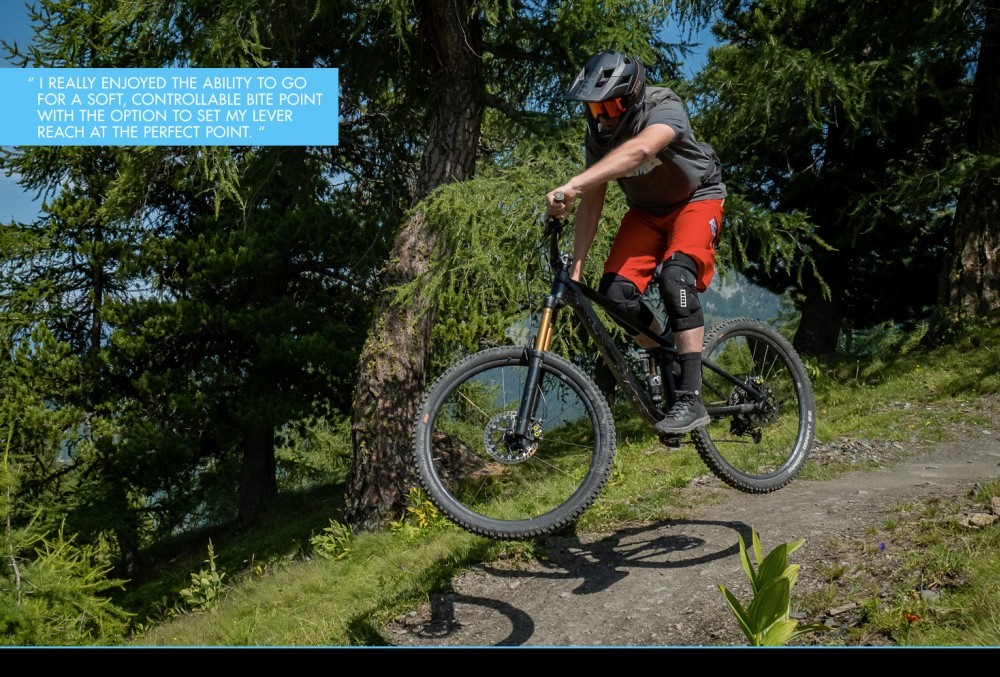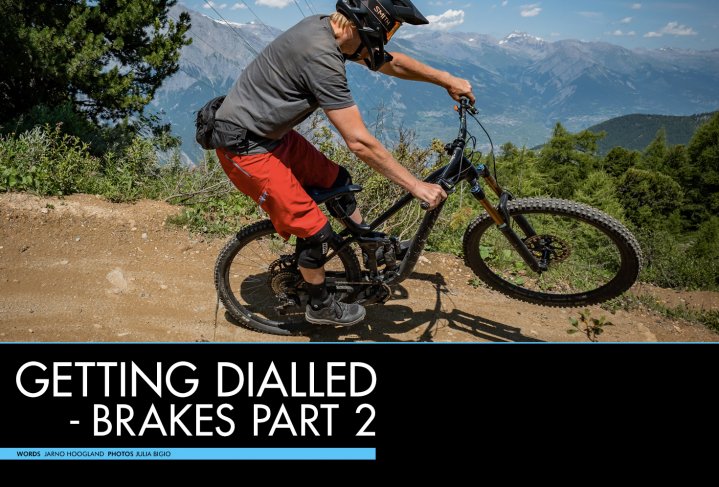
Getting Dialled - Brakes part 2
Issue 66 / Fri 6th Aug, 2021
After edition one, we went out and researched the effect of high end disc rotors and various brake lever options on the smiles-per-hour.
In issue 65 we took a deep dive into the option of how to tune your brakes and checked out which options there are in the market to get a brake matching your needs.
We found that for many riders, upgrading to a larger rotor is a great way to have more control, modulation and heat dissipation. The added weight penalty is minimal, while the gains are substantial. The larger rotor will give the same power with less effort at lever, and most importantly gets rid of the heat a lot better.
Another thing we noticed is the enormous effect brake pads have on the performance of your brakes. Just a different compound can give you more power, better performance in wet temperatures or under prolonged hard braking.
Level up your lever
People come in all different shapes and sizes, and so do their hands. Weirdly enough, there aren't that many options to customize your brake levers to fit your hands. If your bike comes equipped with the higher end brakes, you can usually change the reach on them. Which is essential if you have smaller hands.
Personally I like the bite point of my brakes quite close to the handlebars. That way I get less arm fatigue even under prolonged braking. With the levers moved inward towards the stem, I am able to get the most leverage possible, which enables me to use just my index finger for braking.
The Magura MT7’s come standard with their HC one finger alloy brake lever. But the big M offers three other options to meet your demands. Together with Loic Bruni they developed the HC-W lever, which is longer than the stock lever. The bigger leverage gives you more brake power with a smaller effort at the lever and is a great option for riders with larger hands.
Together with Danny Macaskill, they designed the HC-3 lever. This is the most adjustable of the levers, giving you control over braking power and modulation separately. It will also give you the opportunity to choose a super firm bite point, or opt for a more soft feeling at the lever.
Disc Disco
We already know bigger is better when it comes to discs. Besides the size, there are some interesting technologies out there to achieve better heat dissipation. Magura offers 5 different disc options in their range, from the weight conscious Storm SL 2’s to the E-bike specific MDR-C.
What makes a disc E-bike specific you might wonder. Well, they incorporated more material in the disc itself, making it stiffer and better at dealing with the added heat and force of slowing down a heavy bike. More material means it has more volume to absorb the heat (like heating up more water for a cup of tea takes more time) and it is less prone to flexing under cornering. As E-bikes are heavier, they tend to flex more over bumps and corners, sometimes resulting in the pinging and singing of your discs. On entry level E-bikes this is an issue many mechanics are aware of.
The MDR-P is a two-piece rotor that features a unique Dovetail Interlink technology that interlocks the outer and inner disc rings. When the outer ring expands from heat, the interlocking mechanism gives extra support and strength for the inner ring. This technology means the torque is transmitted over the total surface of the system instead of just at the rivets, which is the case with a standard floating disc design. The result is increased rigidity and improved heat dissipation, which is much more effective under continuous and heavier braking loads.
Out on the trail
After finding my favorite setup (203mm discs front and rear, Race pads front, Performance pads rear) it was time to play with the different models of discs. Our first testing was done with the Storm HC discs. The most common disc you find stock on many bikes, and very similar to the ones available from brands like Sram and Shimano.
For regular trail use, they performed fine. Good amount of bite, and even on the longer descents they had a decent amount of heat dissipation. Heavier riders like me did notice the brakes started to struggle on the longer, steeper descents. You could notice the heat buildup and slow loss of bite and power.
When switching to the MDR-P discs it was time to find out if these really made a difference. After bedding in the pads, it was off to ride a trail called ‘Jackass’. It starts at the 2473m high Pierre Avoi peak, above Verbier and ends in a village called ‘Cries’ (possibly referring to your lower arms and bike when you get there. The descent is a solid 1500m of steep, gnarly hairpin filled trail where you are constantly on the brakes. Great test track in my opinion.
The first few metres it was clear these rotors gave you a lot of power, while not compromising on modulation. Compared to the Storm HC discs, it was like you received another level in terms of power. As the trail is strewn with nose-wheelie turns, it was great to easily flick the bike around without the need to put in a lot of effort on the lever.
Further down the trail it became apparent that Magura’s dovetail design is no marketing thing. With the heat building up, the brakes kept performing like at the top of the trail. The biggest plus for me when reaching this section of trail, was the lack of fatigue in my arms. The extra power enabled me to ride more relaxed overall, really reducing arm pump.
The lower section of the trail is where the real test is. Generally you already stopped a few times to let your brakes cool down, and give your arms a break. For testing purposes however, I didn’t allow such acts of weakness and did full top to bottom runs only.
Arriving at the lower turns, the trail gets to a gradient that you have no other choice than to continuously drag the brakes. Letting go means a crazy acceleration, and a mistake means heading off the edge of a cliff. When arriving at this point with the Storm HC discs, I wasn’t riding, but more hanging on for dear life. But with the MDR-P’s there was much more control and it gave me the opportunity to enjoy the trail more. In short, even at almost double the price the MDR-P discs offer a great boost in performance for the person who rides in serious terrain.
Grab a handful
Next up was brake lever tune time. To be honest, the stock levers that come with the MT7’s feel fine to me. They have a nice grip, good leverage and good amounts of adjustability to set them up the way I prefer them. Still, I was keen to give Loic Bruni’s choice of brake lever a go. The added length would in theory fit my hands quite well.
Switching levers is a moderately difficult task with the Magura’s. The only really tricky bit is to remove the pin that holds the lever in place. But, with the right size center point and some firm taps of the hammer, it can be done in a few minutes.
The longer lever has a nice hold, and doesn’t flex noticeably under heavy braking. The most flex you notice is in the housing itself, which is a known trait of the Magura’s. Out on the trail the most noticeable plus is the fact you need to use less hand power for the same amount of braking power. It does require some getting used to, as it gets easy to be too enthusiastic and lock up the brakes.
Next up were Danny Mac’s favorite, the HC3’s. These levers let you adjust the lever angle and leverage rate independently. Not sure if anyone needs such a thing, I set out to find out. With so many settings to try, I opted for doing shortlaps on the chairlift to figure my favorite modus.
First setting was slack bang in the middle, which resembled the stock levers feel quite a lot. Next up was turning the leverage dials all the way out, providing a super firm feeling at the brake lever. Although I liked the positive feel of the pads hitting the disc, it did give me a little more arm pump and sometimes made me lock up the wheels when I didn't mean to.
As with all testing, it’s good to try the extremes first and then finetune towards your favorite setting. So, it was time to dial the leverage all the way in, providing a really soft and powerful feel. This setting was really nice in my opinion. It really lets you modulate your brakes a lot, and gives you a really controlled feeling.
Conclusion o clock
So, what can we take away from all these days of switching discs, pads and levers? In general you can conclude that bigger is better for the disc side, for any rider. If you live in a place with proper hills, it is worth investing in high end discs. They dissipate heat a lot better, making you a better rider on longer descents because you preserve energy.
From there on, it gets personal. Looking for a cheap and easy way to tune your brakes? Go for different brake pads. They greatly improve bite, power or performance under prolonged braking.
When it comes to brake levers, your riding style comes into play. If I were riding a big burly DH machine all day, Loic Bruni’s levers are ace. Great power, low arm fatigue and superb performance for high speed braking situations. I didn’t find them so great in slow-tech-tight riding however. Too much of an on-off switch if you’re below 20km/h.
My final setup ended up being the MT7’s 4 piston brakes, Pro pads in the front and Performance pads in the rear. Linked up to 203mm MDR-P discs and that all controlled by Danny Mac’s super tunable brake levers.
Although the extreme settings on these are not for everyone, I really enjoyed the ability to go for a soft, controllable bite point with the option to set my lever reach at the perfect point. With these options, you can even compensate for the weaker feeling you tend to have due to flex in the longer rear brake.
By IMB



